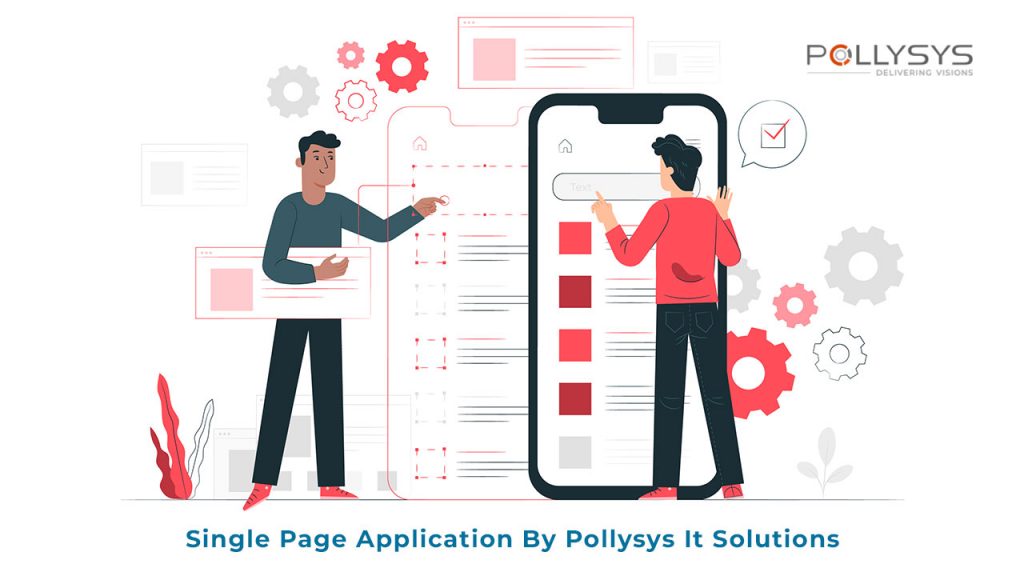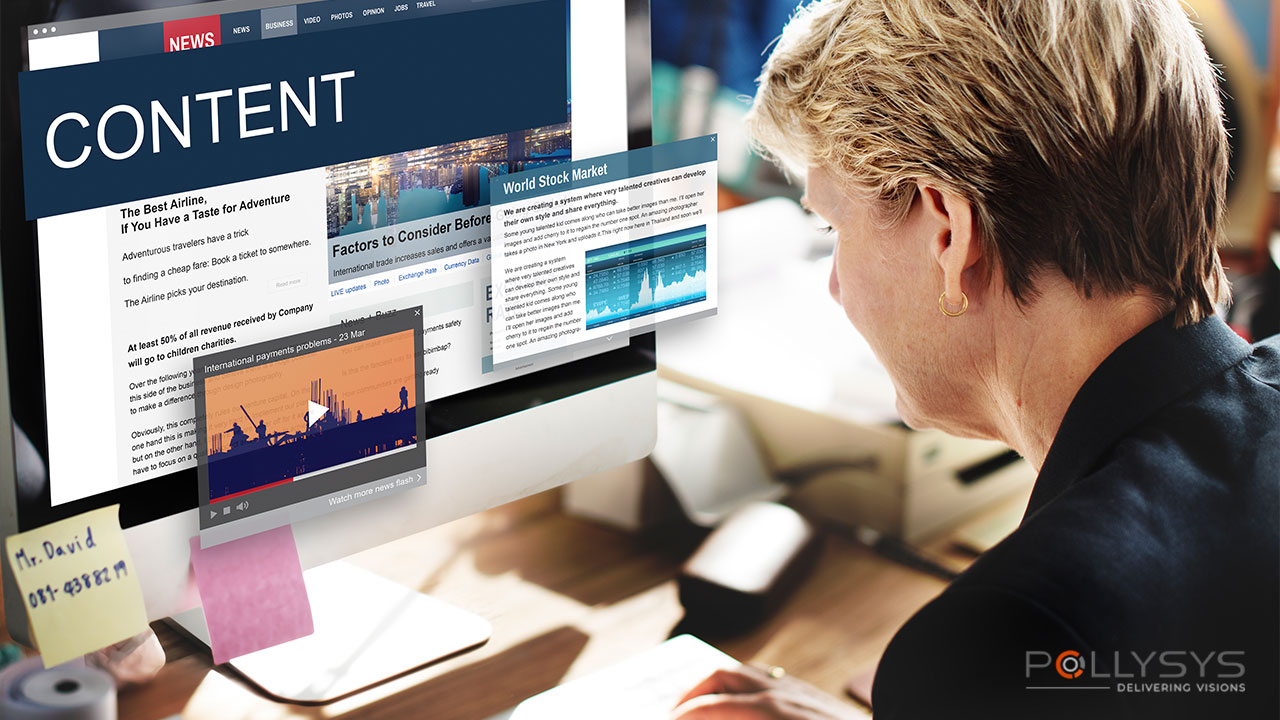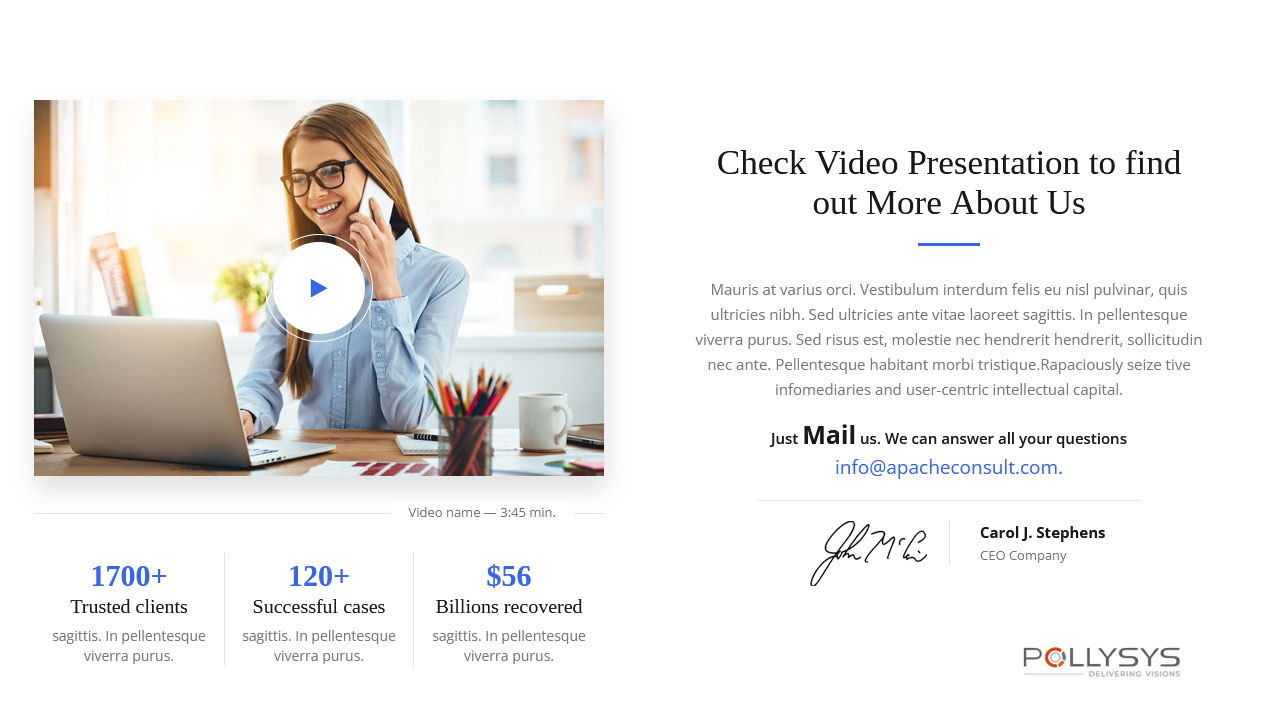
“Single Page Application is a web application that interacts with the web browsers by dynamically rewriting the present web page with new data from the server rather than using the default web browser method to load the entire new page.”
“SPAs are made in such a way that there is NO PAGE REFRESH.”
Single Page Applications are increasingly becoming a popular choice among the social media platforms and most high traffic sites.
This is because of the seamless and outstanding user experience it offers.
- But what exactly is a single-page application?
- How exactly does it work?
- Is it different from the traditional one?
- And why is it seeking so much attention?
If you are also looking for answers to these, you have come to the right place.
Let us get acquainted with a complete piece of information on Single Page applications.
What is Single Page Application?
A single page application is a web-based application that preloads within the browser.
It’s an application that dynamically rewrites the current web page with new data from the server rather than choosing the default way of reloading the new pages.
That means it simply eliminates the requirement of reloading a web page every time while providing the relevant content for user interactions.
It is a more modern approach to application development.
Understanding it with the help of an example!
You are probably familiar with the various popular applications like Facebook, Netflix, and Gmail.
And you might not know that these famous applications are single page applications.
If you are also a frequent user of these applications, you probably have noticed that the screen does not change much whenever you click on something!
And even the headers and sidebars stay the same, right?
That is essentially the primary idea behind the SPA.
A heavy application’s base requires to be downloaded at the start only, and later there are the bits that alter.
This indeed makes the entire experience better.
And the best part is that after the initial loading ting time, everything is so quick and smooth as only little data is transferred.
Unless you’d like to understand the deep technicalities, this idea is enough to understand the concepts of SPAs.
How does the Single Page Application work?
A SPA is a web application that interacts with the users by dynamically rewriting the current page instead of loading a completely new one.
This SPA approach nullifies the interruption of the user’s experience among the subsequent pages while making the application behave more like a desktop app.
On the ample websites, you may see a lot of repeating content.
Some of the content stays the same, shown in footers, headers, and navigations, while some of it remains constant in a specific section like banners.
SPAs take advantage of this repetition.
Let us suppose that your website view has a robotic infographic.
What do the traditional applications do? They just paint the entire picture on the server and then send it to your browser.
On the contrary, SPAs provide the paint-by-numbers guide for the site and then pipes the data and content to fill the template.
Here SPA comes into the picture when a user requests new content.
The new request causes the server to repaint the picture and then send it back in a traditional way.
But the picture is entirely different with SPAs.
With SPA, the requirement to repaint the entire picture is eliminated, and only the updated instructions are painted on the page, with the whole scenario being the same.
By transferring the page rendering that was being considered as the painting work till now from server to client can be dynamically rewritten.
Woahh!! This eliminated the need for an entire reload, making the SPA a lot faster.
Single Page Application Architecture!
The architecture of a Single Page Application is pretty easy.
The architecture of a SPA is composed of client-side and server-side technologies.

It has three choices to choose from. This includes:
Server-Side Rendering (SSR)
SSR is often chosen as it combines the promptness of SPA while not overloading the browser.
The SSR follows the following process:
- The browser directs the request for an HTML file from a server.
- The server obtains all the desired data, selects the Application, and produces its HTML file.
- All the accessible content is then visible to the users.
- The SPA framework adjoins the events, generates a virtual DOM, and executes further actions.
- After this, the Application is ready to use.
Client-Side Rendering (CSR)
CSR is an alternative for the ones seeking simple-looking websites.
But it is required to be noted that CSR involves ample resources that might overload the browser.
However, if you have a heavy-traffic website, CSR is often preferred.
The CSR follows the following process:
- The browser shares a request for an HTML file from a server.
- The server reverts with a simple HTML file with associated styles and scripts.
- The user views a specific loader image or a blank page while JS performs.
- The Application obtains data, creates the views, and inserts it into DOM.
- After this, the Application is ready to use.
Static Site Generators (SSG)
SSG is often considered a quick and excellent option.
But if you have some dynamic content, then SSG might not be the best support. The process it follows includes:
- The browser leads to a request for an HTML file from a server.
- The server reverts with a previously organised HTML file.
- The user views the page.
- The Application obtains the data, generates views, and inserts it into DOM.
- The Application is then ready to use.
Key Features of Single Page Applications
- Excellent user experience
- No extra wait times
- No page reloads
- Content is presented in a simple, easy, and workable fashion
- Heavy dependency on JavaScript
Advantages of Single Page Applications
- Reduces the use of various resources
- Easier to debug
- Enhanced User Experience
- Higher process speed
- Codes can be reused to transition to other applications
- Better Conversions
- Mobile friendly
- Higher response time
- Increased speed
- Makes a website unique and engaging
- Caching Capabilities
- Less complex implementation
- Client-Side rendering
- Can be distributed as a progressive web application
Since the SPA offers ample advantages to the users, it may lead to several disadvantages too!
Every advantageous thing has some minor disadvantages, and so does the SPA.
This includes:
Disadvantages of Single Page Applications
- SPAs do not save users’ jumps between different states.
- Difficulties with SEO Optimization
- It May be vulnerable to attacks from cross-site scripting
Popular Single Page Application Examples
One of the finest ways to understand how a technology works are by analyzing the popular applications that are developed on the same technology.
The famous applications that use SPA include:
Gmail
Gmail is one of the most classic examples of efficient single page applications.
Whenever you log in to your Gmail account, you only see a progress bar that fetches the data from the server at once only.
And when this rendering is done on the client-side and logged into your account, the web page doesn’t get reloaded.
Only the requested main section is updated, and the rest of the layout remains the same.
Another famous example of SPA is Facebook, in which only the chunks of the content get loaded whenever you scroll the website.
And the rest of the page remains the same!
Therefore, you do not even need to leave the current page for enduring your experience.
Netflix
Netflix is one of the popular streaming services for watching movies and shows.
The application is developed on the React Single Page Application, allowing users to enjoy their favourite shows devoid of any lags.
The foremost benefit of using SPA for Netflix can be seen when we compare the data streamed quantity with the number of users accessing the data simultaneously.
Usage of Single Page Applications
Since the beginning of web application MPA was indeed in the leading position until the road to the SPA framework first appeared.
It was a built-in static HTML by several server-side technologies, including Python, PHP, Java and Ruby.
The traditional MPA makes multiple requests between server and client as every webpage was coming from a server.
But the developers required something like a page update devoid of any page reloads. And that is when the AJAX came with a hope that indicated how SPA seems in the near future.
Later in 2006, the jQuery release began the overcoming of current JavaScript.
Though it was not at all a SPA framework, it was an indicative pathway to the future.
However, it didn’t elegantly suit the data handling even after being a UI focused framework. But when it is about simple web applications, it was found as a perfect fit.
Later, to diminish these handling issues, web developers introduced Knockout JS with MVVM data binding.
It simplified the process by taking the view model and binding the same to the browser’s HTML.
The path to SPA was still too far at this step; there were no traces of it being much more efficient.
Later in 2009, the introduction of Backbone.js offered developers a light towards a lightweight client-side framework that can develop a SPA easily.
But then it led to a lot of hard work to code.
Not ending with this, the first-ever true SPA arrived because Angular.js brought new hope with all these ideas in 2010.
Client-side MVC, two-way data binding, dependency injections, and templates; all in one framework!
This was the beginning of a new era for Single Page Applications!! And the era is indeed increasingly shining.
Popular Single Page Application Frameworks
One size fits all!
It probably won’t work here if you think this implements everywhere!
The same JavaScript framework that works well for an application might not work well for yours.
Every project is different, and so does the requirements.
And each SPA framework offers different things and approaches to the same task.
However, you need to pick the best-suited framework with your unique requirements.
The most popular frameworks for a Single Page Application include:
Angular Single Page Application
Angular is a popular JavaScript framework introduced in 2010.
And the exclusive property of Angular is the unique programming language -TypeScript.
TypeScript is a more organised programming language having a featured-packed library based on JavaScript, making the development process more efficient and easier.
The popular applications using Angular Single Page App include Google Drive, Wix, and Gmail.
React Single Page Application
React is another popular JavaScript framework that was first introduced in 2013.
It’s a mature and lightweight framework that is ideal for developers who have started with JS.
The popular applications using React Single Application framework include WhatsApp, Instagram, Facebook, and Uber.
Vue Single Page Application
Vue framework is comparatively new as compared to react and angular but is often compared to them.
However, it is considered an ideal one for developers who prefer simplicity in the front-end frameworks.
The popular applications developed on the Vue SPA include Alibaba, Gitlab, and Baidu.
Other Frameworks
Apart from the popular ones, several other libraries and frameworks can also be used to create SPAs devoid of any fuss. This includes:
- Meteor Js
- Ember Js
- Backbone Js
- Aurelia
- Knockout Js
- Polymer Js
THE MASTERPIECE OF PROFESSIONAL’S ADVICE!!
The road to deciding which type of application is the best fit for your project or company is yet to be identified!
Yes, whether a SPA or an MPA is the best fit?
Identifying it is indeed challenging.
But an expert always clarifies it!
Here’s a bit of professional advice!
When to choose SPA?
SPAs are rich in providing rich client-side functionality that does not require reloading the entire page on requests.
However, it is always good to choose SPA if you already have a well-pitched audience and you do not require pitching SEO from the same.
In short, SPAs are beneficial for applications that require real-time updates and ideal for those who need dynamic platforms with limited data to work.
For the sites functioning a seamless and faster user experience must choose the SPA>
Just like Facebook and Twitter!
But remember these are the popular brands that do not require SEO practices.
When not to choose SPA?
If you have a large company with a huge services range or you are new in the market with the motto of building a name, MPA is to choose!
Now that things are far different from the traditional applications, it is obvious to compare both the application types.
So are you ready to get clarity over the differences between them both?
Let us head towards the comparison of trending versus traditional!
Single-page application vs multi page application
| Parameters | Single Page Application | Multi Page Application |
| Definition | SPAs are web applications that have a single web page only and the browser reloads specific sections of the page whenever a user requests. | MPAs are web applications that have multiple web pages which are reloaded whenever the user requests. |
| Cross-Platform | SPA is a cross-platform | MPA can be a cross-platform if built using the right framework. |
| Speed | It has smooth navigation and faster speed after being loaded. | It requires a good internet connection especially when the webpages have a lot of graphical elements. |
| Loading time | Initial loading time can be high but after that quick loading time | It has a comparatively slow loading time. |
| Performance | Higher performance | Slow performance |
| Functioning | It can work offline once loaded as it can cache. | It requires good internet connectivity to function. |
| Security | It is hard to secure Single page applications against cyberattacks. | It can be protected against vulnerabilities. |
| Examples | The popular examples of SPA:
· Gmail · PayPal |
The popular examples of MPA:
· Google Docs · Amazon · eBay |
| When to use | Use SPA when you
· Are planning to build mobile applications · Do not require SEO · SAAS solutions · Social Networks · Closed community requiring logins |
Use MPA when
· Enterprises that provide a wide array of products and services · eCommerce stores · Blogs · Product websites · SEO friendly web platforms |
| Code reusability | Codes can be reused | Codes cannot be reused |
| Code Separation | The frontend and backend developers have independent and separate code bases. | There is no clear separation between the backend and frontend. |
| Memory Leaks | SPA can run for hours on the user’s device leading to higher memory consumption. | MPA has a lifetime of minutes. Since they will be reloaded, it leads to less chance of memory leaks. |
| User experience | Seamless user experience | Satisfactory user experience. |
If SPA has so many advantages, why don’t we use SPAs everywhere?
Since SPAs have so many advantages, they still haven’t been adopted on a larger scale.
If you are also thinking about the same, you’ll be glad to know that there is a good reason behind it.
Earlier the search engines had a challenging time appropriately indexing a SPA.
If so, then what about today?
Earlier, there were some recommendations to make use of a unique Ajax crawling scheme that was deprecated.
So does that mean Google is now able to completely render Ajax?
But in an official announcement, it has been said that Google search is now generally able to crawl Ajax.
However, some reports indicate it is not completely able to do so.
And currently, it is recommended to use Progressive enhancement.
Does it mean that it is possible to use SPAs on the public internet with this recommendation?
It is possible to have user experience and performance altogether with good SEO properties.
And surprisingly, the Angular Universal pre-rendering engine use permits to:
- Prerender the supplication on the backend
- Ship the HTML to a browser with Angular js
- Have an angular bootstrap on the client-side
- And take over the page
Will single-page applications become more frequent in the future?
Before discussing the future of SPAs, imagine yourself using an SEO-friendly version of an eCommerce website that will not even refresh itself.
If this happens, each page reloads will indeed have a much-enhanced user experience and enhanced performance.
So, in short, we can say that the technical benefits are significant and even more so on the mobiles.
And yes, we can expect that SEO-friendly Single Page Applications will become more frequent to use in the near future.
Do you still have doubts in your mind?
Probably the below addressed answers to the FAQs may help you get more clarity over SPAs.
FREQUENTLY ASKED QUESTIONS
Are single-page applications good?
Indeed, Single Page Applications offer an enhanced user experience by easily navigating different pages without waiting for the web pages to reload.
What is best for single-page application?
Each framework is not regularly used. However, some of the best frameworks for SPAs are angular JS, React JS and Vue.
What is the difference between web application and single page?
The web application and single page application are two different approaches that are used to build web applications.
The traditional one performs most logic on the server, while SPA performs user interface logic in the browser.
What is single page application disadvantages?
The primary disadvantages of the Single page applications include
- It doesn’t perform well with SEO
- It is prone to cross-site scripting attacks.
What is single-page application and its benefits?
A SPA is a single page where most of the information remains the same, and only a few pieces of information are required to be updated at a time.
The SPA benefits are manifold, including enhanced user experience, higher performance, reduced resource utilisation, and increased speed.
How SPA development benefits the developers?
The SPA is indeed a beneficial way to implement the application because
- It provides a separation of back end and front-end processes
- It is easier to scale
How does SPA development benefit the product users?
SPAs are smooth to navigate and quick to load. This enhances the positive user experience, leading to a higher retention rate among users.
How SPAs are beneficial from a business perspective?
Not only beneficial for the users or developers, but SPAs are also beneficial from the business perspective too.
The foremost benefits from a business perspective include:
- Fast and responsive
- Frictionless user experience
- Better cache capabilities
Bottom Line!
SPA is the foremost choice for the applications that have various forms for storing and manipulating a huge amount of data while searching and sorting it.
This makes it a great fit for reservation systems, social networking apps, and other complex applications.
On the contrary, MPAs are perfect when the page is good to go with static content where users also do not interact much!
Since the SPA is increasingly shining in the technology world and indeed will continue to shine!
But clarity over choosing one is indeed challenging!
Based on the requirements, one that is considered the best fit for others might not work well for you.
However, getting an expert’s help will always be a better decision to get clarification over this!



